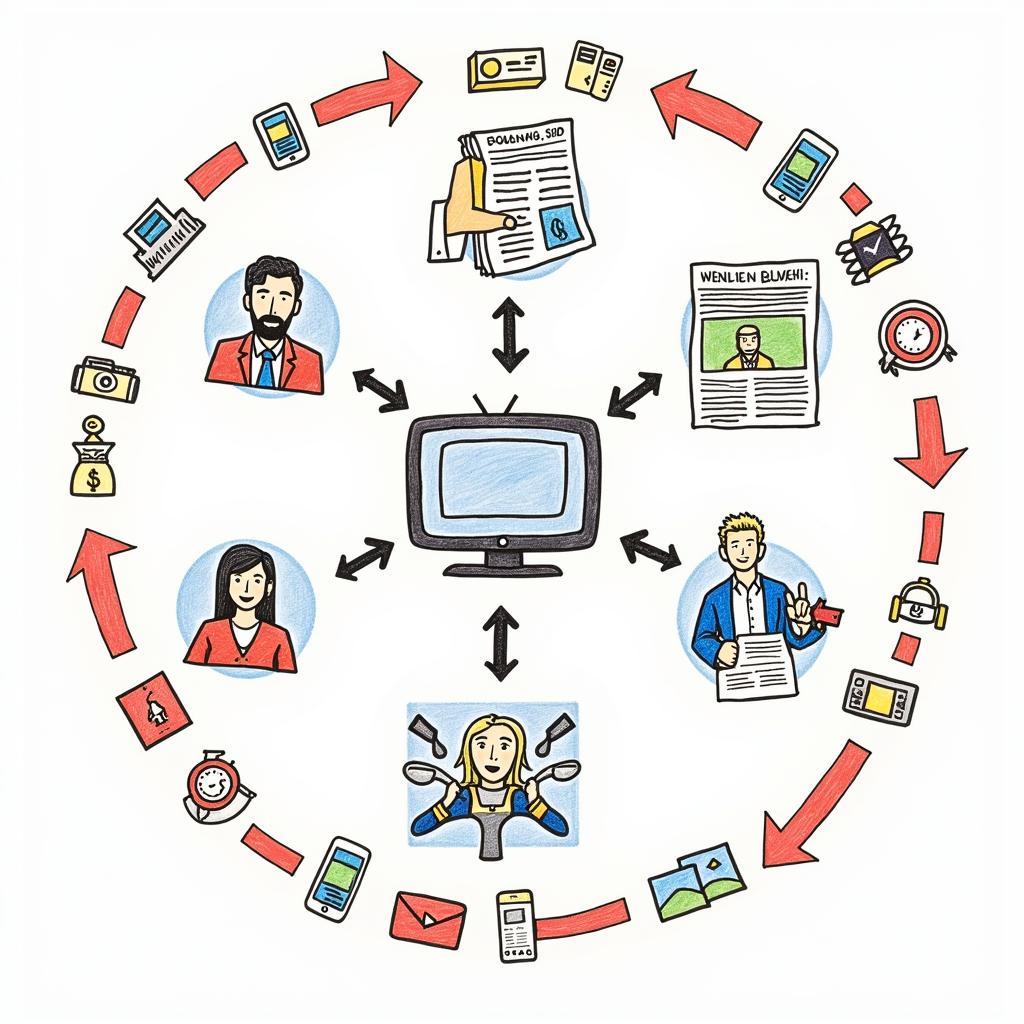Passage 1: The Evolution of Media Influence
In recent decades, the relationship between media and public opinion has become increasingly complex and intertwined. Similar to The role of podcasts in promoting cultural awareness, traditional and digital media platforms have transformed how information reaches and shapes public consciousness.
The proliferation of mass media channels has fundamentally altered the way society processes information. Research indicates that individuals are exposed to approximately 5,000 media messages daily, leading to what experts term “information saturation.” This unprecedented level of exposure has profound implications for how public opinion forms and evolves.

Questions 1-5: Multiple Choice
-
According to the passage, how many media messages do people encounter daily?
A) 3,000
B) 4,000
C) 5,000
D) 6,000 -
What term do experts use to describe excessive media exposure?
A) Information overload
B) Information saturation
C) Media proliferation
D) Digital exposure
Passage 2: Digital Media’s Rising Dominance
The digital revolution has dramatically reshaped media influence patterns, as discussed in Impact of digital privacy on online behavior. Social media platforms have emerged as powerful opinion-forming tools, capable of rapidly disseminating information across global networks.
Studies reveal that algorithmic content curation significantly impacts public perception. These sophisticated systems analyze user behavior to deliver personalized content, potentially creating echo chambers where individuals are primarily exposed to views aligning with their existing beliefs.
Questions 6-10: True/False/Not Given
- Social media platforms use algorithms to personalize content delivery.
- Traditional media has completely lost its influence in the digital age.
- Echo chambers strengthen diverse viewpoints in online communities.
Passage 3: Critical Analysis of Media Impact
Understanding media influence requires examining both overt and subtle mechanisms of opinion formation. Like The role of youth in addressing climate change, media’s impact often manifests through gradual shifts in public consciousness.
The concept of agenda-setting theory suggests that media doesn’t just tell us what to think, but rather what to think about. This nuanced perspective challenges simplistic views of media influence, revealing complex interactions between information sources and public opinion formation.
Questions 11-15: Matching Headings
A) Media’s Role in Democracy
B) The Power of Agenda Setting
C) Digital Echo Chambers
D) Traditional vs. Modern Media
- Paragraph 1 ___
- Paragraph 2 ___
- Paragraph 3 ___
Answer Key
Multiple Choice:
- C
- B
True/False/Not Given:
6. True
7. Not Given
8. False
Matching Headings:
11. A
12. B
13. C
This practice test explores how extensive media’s influence has become in shaping public discourse, making it essential for Public speaking apps for improving confidence and informed decision-making in our media-saturated world.